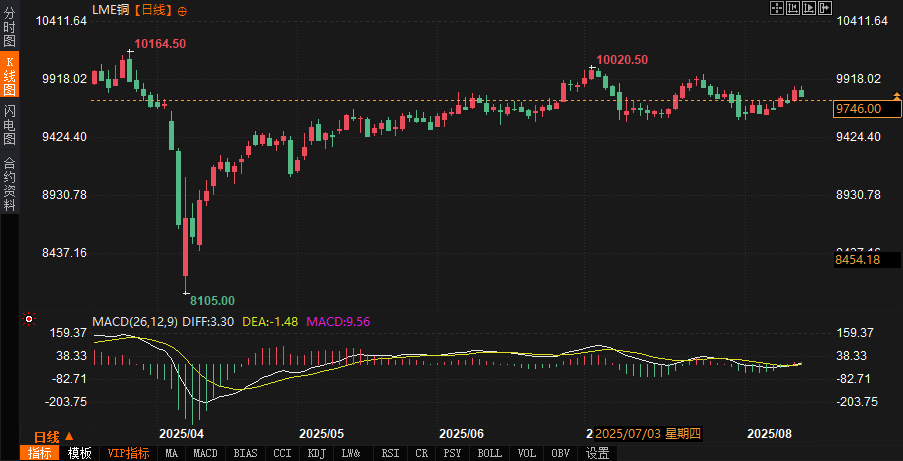Copper prices fluctuated at high levels awaiting macroeconomic guidance, supported by Chile's production cut expectations and recovering demand.
2025-08-14 20:26:52

Macroeconomic fog suppresses risk appetite
The core contradiction in the current copper market lies in the tussle between strong supply-side support and weak macroeconomic expectations. Ole Hansen, Head of Commodity Strategy at Saxo Bank, noted, "The market awaits clear signals from the Ukraine negotiations, the Jackson Hole symposium, and the minutes of the Federal Reserve's July meeting. Until further clarification arrives, copper prices are likely to remain range-bound between $9,500 and $9,900." This view is shared by most institutions—while copper prices have upward momentum, a clearer macroeconomic catalyst is needed to break out of the current range.
It's worth noting that the Federal Reserve's policy path remains a "Sword of Damocles" hanging over the commodity market. The Jackson Hole annual symposium, to be held on August 22nd (Beijing time), may reveal new trends in interest rate policy, while the July FOMC meeting minutes, released on August 15th, may reinforce market expectations of a turning point in monetary policy. If the Fed maintains a hawkish stance, a stronger dollar could temporarily suppress copper prices; otherwise, it could trigger a breakout from the range.
Supply-side disturbances provide bottom support
On the fundamental front, Chile, the world's largest copper producer, received substantial positive news. The country's Copper Commission has significantly lowered its 2025 production growth forecast from 3% in May to 1.5%. This adjustment represents a reduction in projected supply of approximately 80,000 tons. Considering Chile's 28% share of global copper mine supply, this change could reverse previous market concerns about oversupply.
Positive signals are also emerging on the demand side. Analysts at renowned firm ANZ noted that China's July industrial value-added and retail sales data, due to be released on August 15th, are likely to demonstrate economic resilience. Despite a complex external environment, accelerated grid investment and continued growth in new energy vehicle production are providing structural support for copper consumption. Shanghai bonded area inventories have fallen for three consecutive weeks to 98,000 tons, a 23% drop from the year's peak, confirming that actual demand is absorbing visible inventory.
Divergence of opinions among institutions emerges
There are subtle differences among institutions regarding future market trends. JPMorgan Chase emphasized in its latest report that current copper prices have already partially reflected expectations of tightening supply, and further upward movement requires confirmation from a recovery in the real estate supply chain or data confirming a soft landing in the United States. Goldman Sachs' commodities team, however, believes that Chile's production cuts and the long-term demand for energy transition will push copper prices to test the $10,200 mark in the fourth quarter, but caution is needed in the short term regarding volatility risks arising from a divergence between macroeconomic sentiment and fundamentals.

- Risk Warning and Disclaimer
- The market involves risk, and trading may not be suitable for all investors. This article is for reference only and does not constitute personal investment advice, nor does it take into account certain users’ specific investment objectives, financial situation, or other needs. Any investment decisions made based on this information are at your own risk.





















